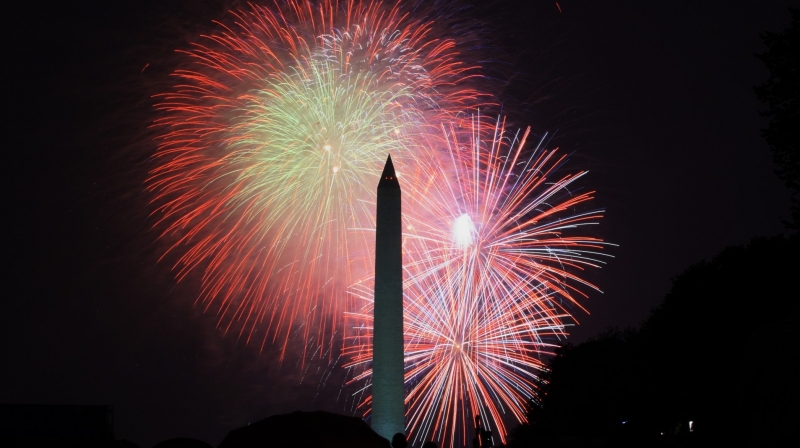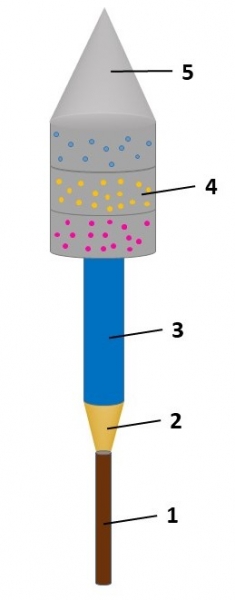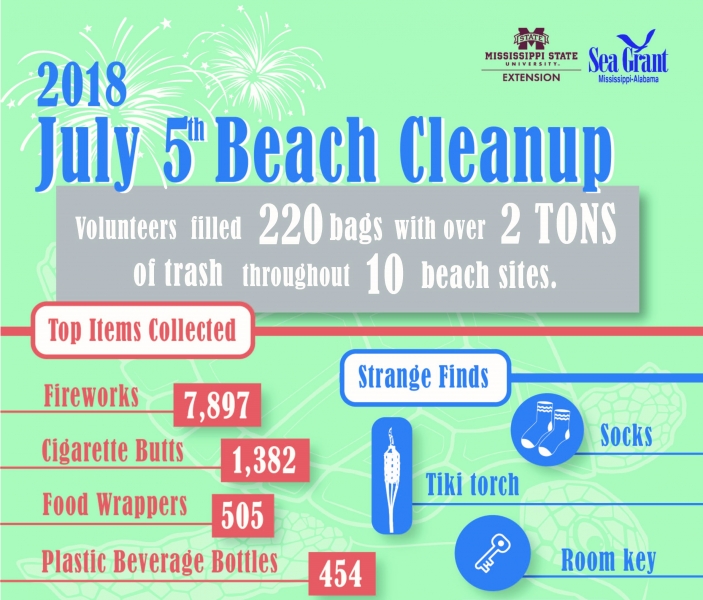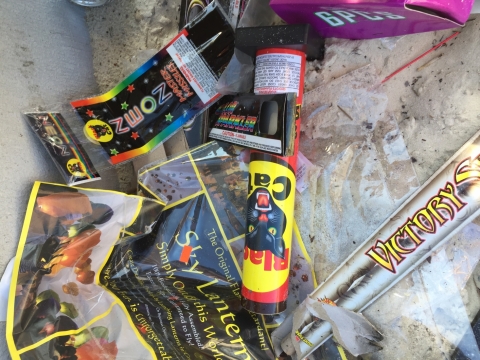As we get ready to celebrate our nation’s 243rd Independence Day, the NOAA Marine Debris Program would like to take a moment to reflect on what makes this holiday so special for Americans and share a few ways to bring it into the 21st century without marine debris!

The Fourth of July commemorates the date the Declaration of Independence was formally finalized and adopted by the Continental Congress. It should come as no surprise that in the United States we have been celebrating the Fourth of July with fireworks since 1777, when as the Virginia Gazette described, “The evening was closed with the ringing of bells, and at night there was a grand exhibition of fireworks, which began and concluded with thirteen rockets on the commons, and the city [Philadelphia] was beautifully illuminated.” While you may view celebratory firework displays in awe, or even enjoy your own personal arsenal, have you ever thought about what fireworks are made of and why so many of them are left in our parks and beaches after the holiday?
Aerial fireworks (the kind that shoot up in the air) generally have 5 main parts. At the bottom is the stick or “tail” (1). This is usually a wooden/plastic stick or cardboard tube that is used to place the firework in the ground and ensure it fires straight. The tail is one of the main pieces that gets left on the ground after the firework is launched. Next comes the fuse (2) which is lit to set off the firework and is usually made of paper or fabric. Depending on how the firework is made, this piece may not completely burn up. The fuse ignites the charge (3) which blasts the firework into the night sky. Once in the sky and away from spectators the effect (4) explodes into the brilliant colors that make fireworks so mesmerizing! Most, if not all, of the charge and effect burn up, but if there is a malfunction bits of them can fall back to the ground. Last but not least is the nose cone (5), made of cardboard or plastic, which makes it more aerodynamic! These wood, plastic, and cardboard pieces are often left behind, along with the packaging, after shooting the fireworks off and they litter our beaches and parks, becoming marine debris.

Since 2017, volunteers with the Mississippi Coastal Cleanup, supported by the NOAA Marine Debris Program, have been working to clean up all of the trash and debris left on Mississippi’s beaches following the Fourth of July holiday. This past year, they removed 7,897 pieces of fireworks and sparklers at 10 Mississippi Beaches across two counties. That’s over five times the number of cigarette butts removed, which are usually the most abundant debris item found during cleanups!

You can still have a blast with fireworks and celebrate Independence Day without the debris!
Consider these tips when planning your festivities:
1. Celebrate responsibly. Handle fireworks with care and dispose of them properly.
2. Think twice before releasing balloons as part of your celebration—they can cause a tangled mess for wildlife or be ingested.
3. Avoid unnecessary products like single-use plastic items. To reduce your trash footprint, bring your own water bottle to your Fourth of July picnic, use reusable plates and utensils, and shop for supplies with reusable bags! Simple steps like these can help reduce waste that can end up in our waterways.
4. Dispose of waste properly, no matter where you are. If you can’t reuse or compost items, make sure to recycle them when possible.
5. Volunteer at a cleanup! Party-goers can leave behind tons of trash, but many communities organize a “Fifth of July” cleanup, like this one across coastal Mississippi, to help with this issue.

